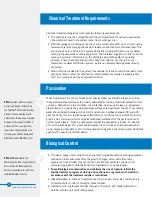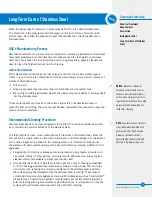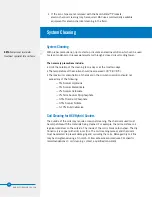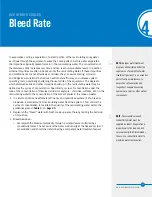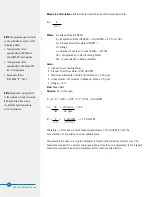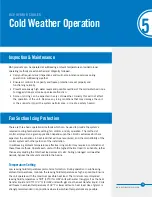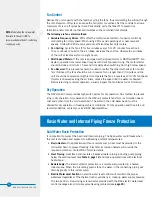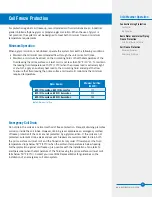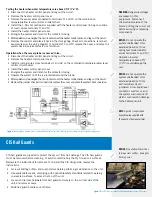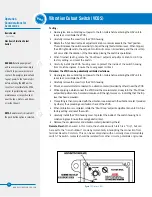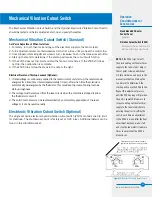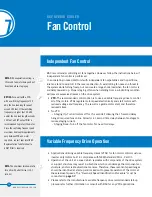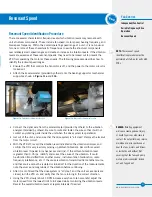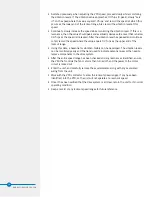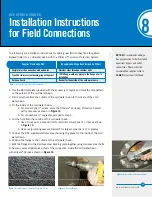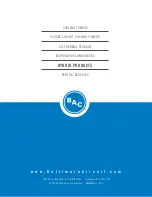
37
37
Resonant Speed
Resonant Speed Identification Procedure
There are several characteristic frequencies at which vibration levels may resonate with
unit structural components. These include fan speed, motor speed, bearing frequency, and
blade pass frequency. Within the overall operating speed range of a unit, it is not unusual
for one or more of these characteristic frequencies to excite the structural components
over relatively small speed ranges and create an increase in vibration levels. If the vibration
levels are excessive at these resonant speeds, they need to be locked out to prevent the
VFD from operating the motor at these speeds. The following procedure describes how to
identify the lockout speed ranges:
• Ensure the VFD that controls the fan motor is off, and the power to the motor circuit is
locked out.
• Attach the accelerometer (provided by others) onto the bearing support or mechanical
support as shown in
Figure 11a
and
11b
.
Figure 11b.
Alternate Accelerometer Location
NOTE:
The resonant speed
identification procedure must be
performed at start-up for units with
VFDs.
• Connect the signal wire from the accelerometer (provided by others) to the vibration
analyzer (provided by others). Be sure to route and fasten the wire so that it will not
contact any rotating parts inside the unit when the drive system is operational.
• Get out of the unit, and ensure that the drive system is “all clear.” Remove the lockout
from the motor circuit.
• With the VFD off, record the vibration level indicated on the vibration analyzer, and
confirm that it is very low (only picking up ambient vibration). Record this overall
vibration level (0-peak) in inches per second (ips). If the ambient vibration level
is greater than 0.35 ips, identify and correct the cause of the vibration. It could
be vibration transmitted from another source, instrumentation malfunction, radio
frequency interference, etc. If the cause is vibration transmitted from another source,
and that source cannot be isolated or turned off for the duration of the measurements,
note the source and magnitude of the vibration before continuing.
• After it is confirmed that the drive system is “all clear” and the unit access doors are
closed, turn the VFD on, and verify that the fan is turning in the correct direction.
• Using the VFD, slowly (about 1 RPM increase every five to ten second(s) adjust the
motor speed from the lowest limit to full speed while monitoring the vibration levels.
Record the overall vibration levels at regular intervals if desired.
DANGER:
Rotating equipment
will cause severe personal injury
or death to persons who come in
contact. Do not perform any service,
maintenance, or inspection on or
near the fans, motors, and drives,
or inside the unit without first
ensuring that the fans and pump
motors are disconnected, locked
out, and tagged out.
Fan Control
Independent Fan Control
Variable Frequency Drive
Operation
Resonant Speed
Figure 11a.
Preferred Accelerometer Location
37


